The Indian River Lagoon is a coastal estuary defined by its seagrass-based ecology. Seagrasses are flowering, saltwater plants that live in the shallow areas of an estuarine system. Most species of seagrass are perennials (recurrent, having a life span of two years or more) that are visible throughout the year. Some species of seagrass, however, grow slowly in cold weather and can lose leaves and other plant material during cold snaps.
Seagrasses are essential to the lagoon, serving as a nursery for juvenile fish, a habitat for shrimp and other animals, and a staple food for endangered manatees. Only two and a half acres of seagrass can support as many as 100,000 fish and 100 million invertebrates (animals lacking a backbone, such as worms, clams and snails). In addition, seagrass adds dissolved oxygen to the water so aquatic animals can breathe.
Sensitive to changes in the lagoon’s environment, seagrass serves as the primary indicator of the lagoon’s overall health. Like land plants, seagrasses require sunlight to survive and use photosynthesis (the process of changing carbon dioxide, water and sunlight into energy and oxygen) to make food. Good water clarity in the lagoon allows sufficient sunlight to reach seagrass beds.
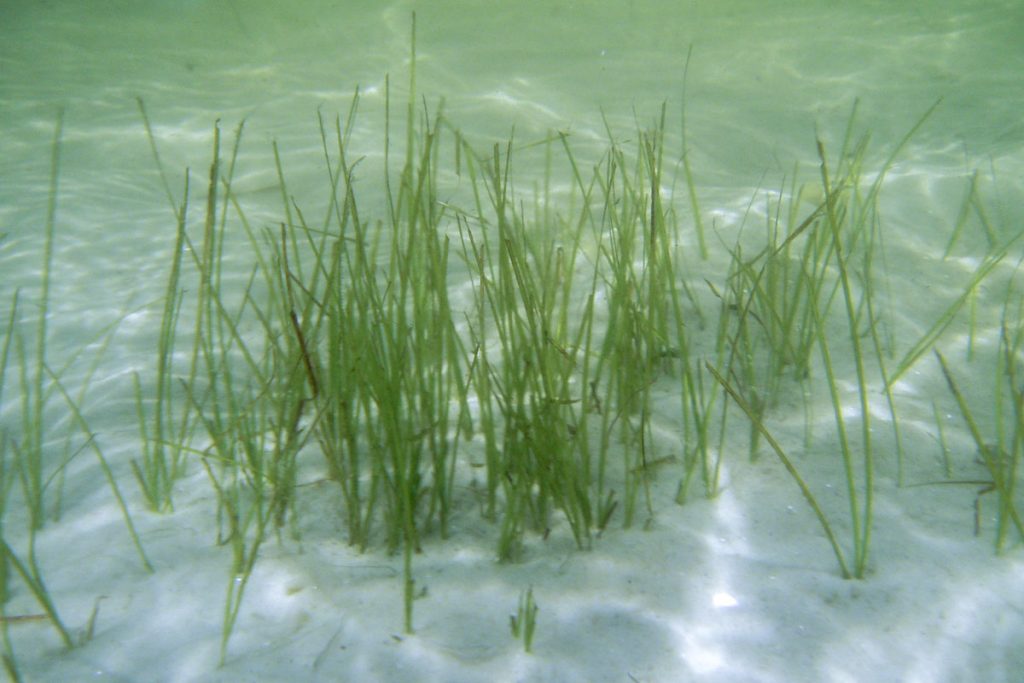
Shoal grass (Halodule wrightii)
Shoal grass is the most common of the seagrasses, and it can be found throughout the lagoon. It is most abundant in shallow water (less than 6.5 feet), and it tolerates a range of salinities. Clusters of multiple leaves, with notches at their tips, originate from a single node along a creeping, branched rhizome (a stem that grows horizontally and gives rise to both leaves and roots) and can grow to lengths of four to 10 inches. Shoal grass is considered a pioneer species because it can grow and spread quickly to stabilize the sediment.
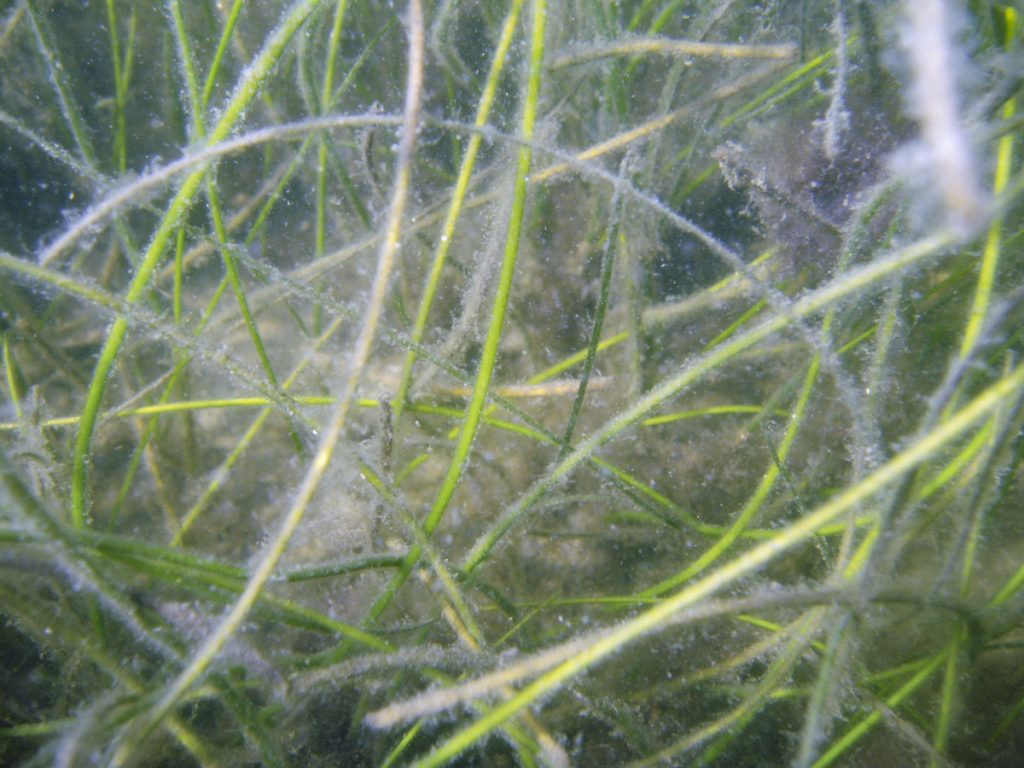
Manatee grass (Syringodium filiforme)
Manatee grass is found at mid-depths (5 feet) throughout the lagoon and can grow to lengths of 14 inches. It is rarely found in shallow water, and is often found in mixed beds with other species. The blades of this seagrass are cylindrical, with two to four blades arising from each node in the rhizome. As denoted by its common name, manatees prefer to feed on Syringodium.
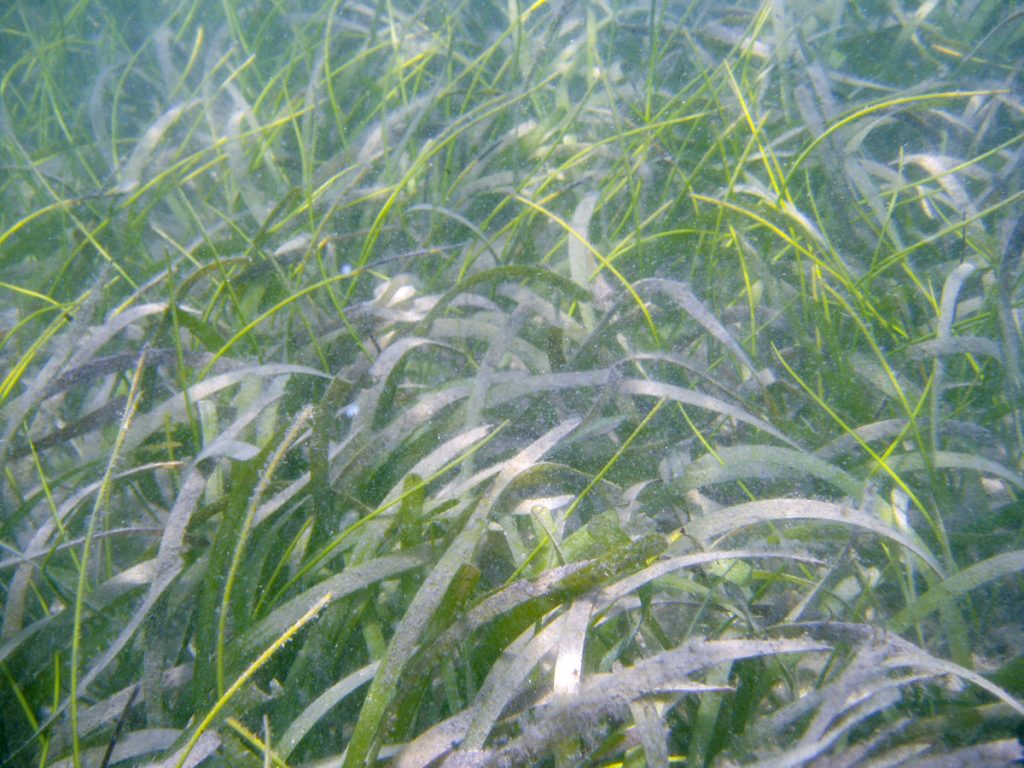
Turtle grass (Thalassia testudinum)
Turtle grass can be found in the southern half of the lagoon (south of Sebastian Inlet) at mid-depths.Blades of turtle grass are flat and ribbon-like, growing to 14 inches long and a half inch wide. Blades can lengthen up to one inch per week under ideal conditions. Thalassia has the highest requirement for light of all the seagrasses in the lagoon, and it is an excellent indicator of healthy, stable water quality.
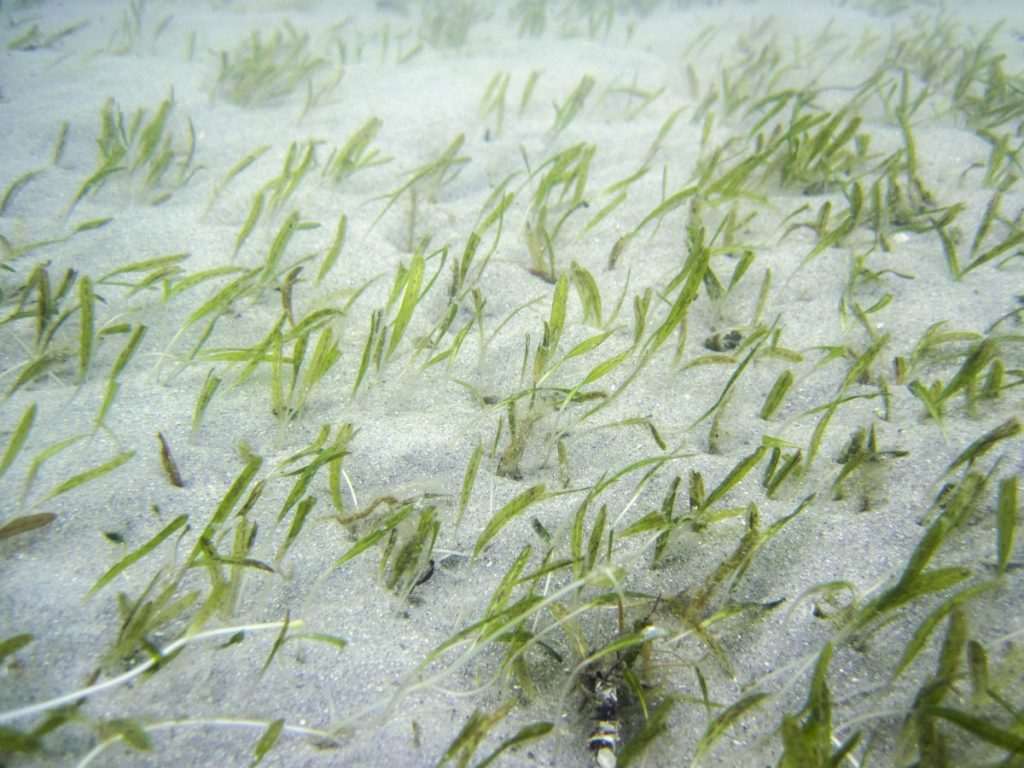
Johnson’s seagrass (Halophila johnsonii)
Johnson’s seagrass is found only in southeast Florida, including the southern half of the lagoon. Johnson’s seagrass is short, one to two inches long, with paired leaves that have central veins originating from a single node on a rhizome. It can form dense patches, with patches often split between deep water and shallow shoals, possibly due to competition for light with larger species. Johnson’s seagrass was named in honor of J. Seward Johnson Sr., founder of Harbor Branch Oceanographic Institution in Fort Pierce. The National Marine Fisheries Service considers Johnson’s seagrass to be a threatened species under the Endangered Species Act, due to its limited ability to reproduce and its limited distribution.
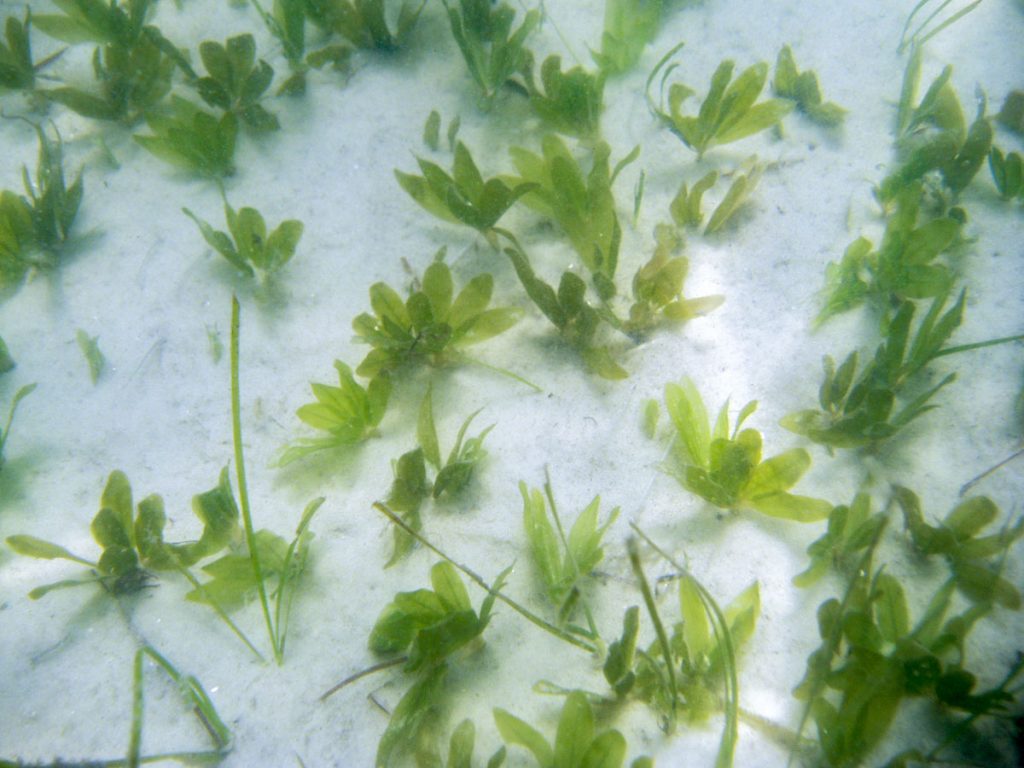
Star grass (Halophila engelmannii)
Star grass generally is more common in the northern lagoon, but it can be found throughout the system. Star grass grows at a range of depths and sometimes with other species in mixed beds. Whorls of four to eight blades, one-half inch to an inch long, grow from a single stem forming a star-like pattern.
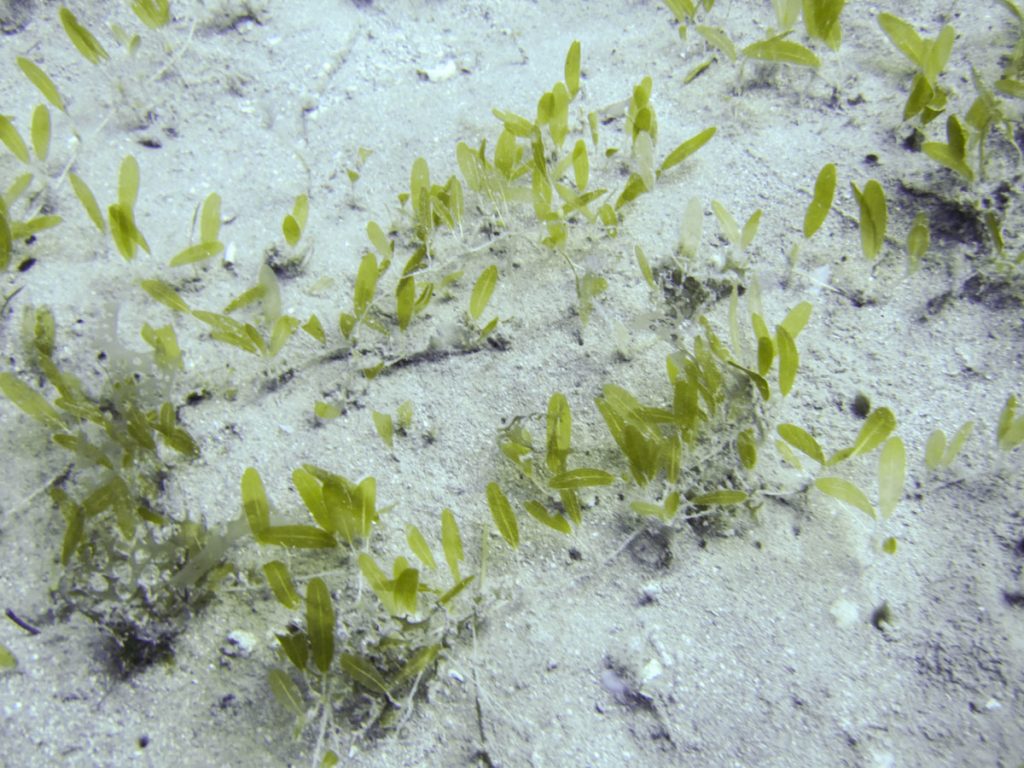
Paddle grass (Halophila decipiens)
Paddle grass is the only species in the lagoon that is an annual, which means its blades are lost in cold weather and reemerge in warm weather. It generally is found in deeper water, and it is most abundant at the southern end of the lagoon, south of Sebastian Inlet. The blades, between one-half inch to an inch in length, resemble those of Johnson’s seagrass, but they have small notches on their margins, a broader paddle-shape and more rounded tips.
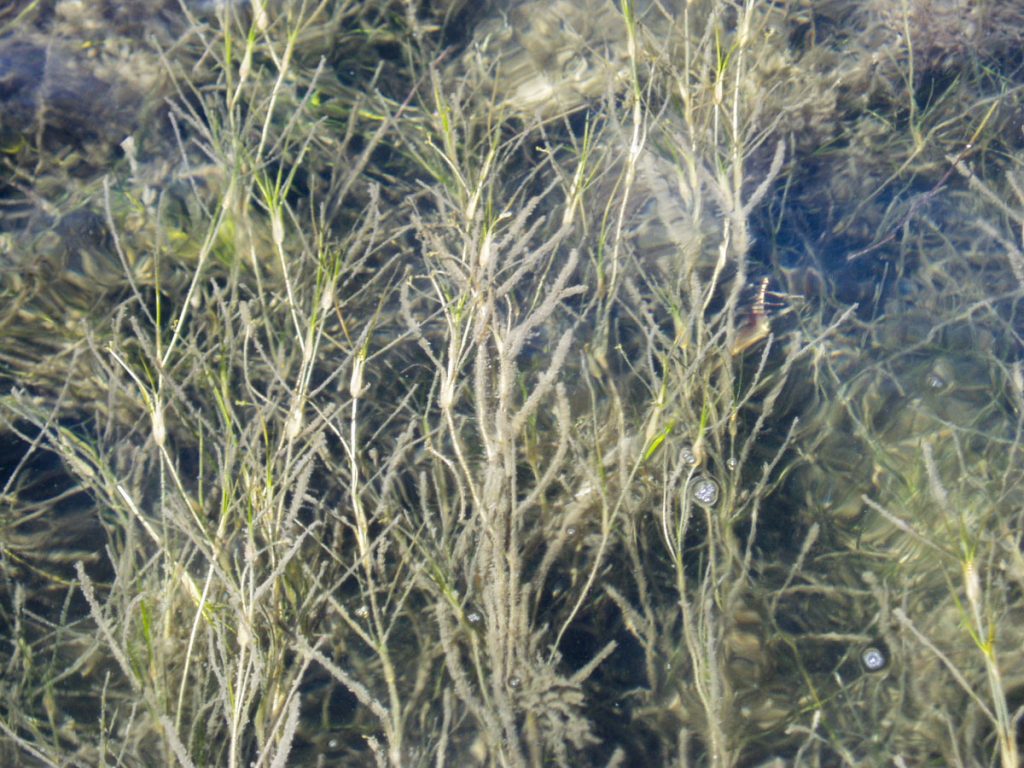
Widgeon grass (Ruppia maritime)
Widgeon grass grows in patches throughout the lagoon in very shallow water (often less than 1 foot), and it can be found in areas with low salinity. The blades arise alternately from a sheath and they are wider at their bases and taper to long pointed tips. This grass closely resembles shoal grass, but its blades lack notches at their tips.

